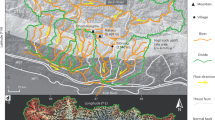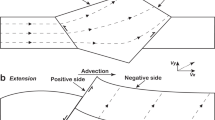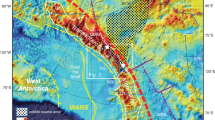Abstract
THE interesting account of the mode of formation of “Stone Rivers,” given in a late number by Sir C. Wyville Thomson, recalls to my mind some apparent moraines which I observed, and somewhat similarly explained, some years ago in the Hartz Mountains. In a paper read before the Geological Society of Dublin in 1872,1 I thus speak of them: “The first thing that one notices on entering this valley the ‘Ockerthal’ from the north is that the bed of the stream is crowded with granite pebbles and boulders, which become of greater size as we proceed up the valley. The boulders are soon so large—many of them some tons in weight—and are situated so far up the slopes on each side, that the first idea is, we have here the morass of a former great glacier. I looked diligently for ice marks, but could see none; and I soon found that the causes which have the effect of scattering huge blocks of rock on the slopes and on the bed of the river are now at work and are slowly, but surely, altering the contour of the adjoining granitic mountains …. All over the sides and upon the summits of these mountains are scattered the most fantastic piles of immense boulders. Some of them are over thirty feet in height and form conspicuous objects in the landscape; others, again, are deep in the forest, away from pathways, and are not to be seen until one climbs quite up to them …. It is quite clear that the contiguous surfaces of the blocks in these piles are undergoing a slow decomposition, that the joints are becoming gradually looser, and in consequence the cohesion of the component pieces less and less. Sooner or later the upper portions must either slip off or topple over, and roll down the mountain side. And this is not mere theory, for I hear that every now and then a boulder does fall and comes crushing down the hill until quietly deposited near the bottom. It would appear that while the surrounding rock has been decomposed and has fallen down in the manner indicated, these heaps have the longer resisted. But they are yet to follow in their turn; when the atmospheric agencies have sufficiently done their work, gravity will come in and lower the whole.”
This is a preview of subscription content, access via your institution
Access options
Subscribe to this journal
Receive 51 print issues and online access
$199.00 per year
only $3.90 per issue
Buy this article
- Purchase on SpringerLink
- Instant access to full article PDF
Prices may be subject to local taxes which are calculated during checkout
Similar content being viewed by others
Author information
Authors and Affiliations
Rights and permissions
About this article
Cite this article
ABRAHAM, P. “Stone Rivers”. Nature 15, 431 (1877). https://doi.org/10.1038/015431a0
Issue date:
DOI: https://doi.org/10.1038/015431a0



